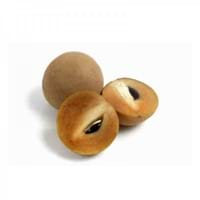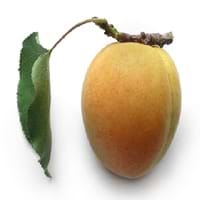Health Benefits
Anti-inflammatory properties, Arthritis treatment, Regulates Blood Sugar, Unknown
Asthma treatment, Cancer prevention, Controls blood pressure, Digestive aid, Heart care, Maintains hormonal balance, Regulation of heart rate, Skin cleansing, Skin rejuvenation
General Benefits
Boosts immune system, Controls blood sugar levels, Digestive aid
Boosts immune system, Controls blood pressure, Digestive aid, Eye care, Maintains healthy cholesterol level, Strengthens bones
Skin Benefits
Nourishes skin, Protects skin from oxidative stress
Hydrates skin, Reduces wrinkles, Treatment of dark spots, Treatment of skin diseases
Hair Benefits
Prevents hair loss, Promotes longer and healthier hair, Regulates hair growth
Good conditioner, Regulates hair growth, Rejuvenates scalp, Softening mask, Treatment of dandruff
Allergy Symptoms
Asthma, Red rash, Swelling of mouth, tongue or lips
Abdominal cramps, Anaphylaxis, Breathing difficulty, Diarrhea, Itching of mouth, Itching sensation in throat, Swelling of mouth, tongue or lips, Vomiting, Wheezing
Side Effects
Diarrhoea, Vomiting
Dizziness, Headache, Nausea, Vomiting
Best Time to Eat
As a snack in the late afternoon
Best if taken as a breakfast (or empty stomach), As a snack in the late afternoon, Don't consume at night and before bed, Eat the fresh ones, avoid mixing with any other foods, don't eat after meal.
Vitamin B5 (Pantothenic Acid)
Vitamin C (Ascorbic Acid)
Vitamin E (Tocopherole)
Not Available
Vitamin K (Phyllochinone)
Not Available
Lutein+Zeaxanthin
Not Available
Phytosterol
Not Available
Calories in Fresh Fruit with Peel
Calories in Fresh Fruit without Peel
Not Available
Not Available
Calories in Frozen Form
Not Available
Calories in Juice
Not Available
Calories in Jam
Not Available
Calories in Pie
Not Available
Varieties
Bush Table Queen, Heirloom Table Queen, Festival Hybrid, Early Acorn Hybrid, Table Ace, Ebony and Cream of the Crop
Gold Cot, Tilton, Wenatchee, Goldbar, Gold Kist, Tomcot, Harcot, Brittany Gold, Harglow, Hunza, Moorpark, Patterson and Royal Rosa
Seedless Variety
Not Available
No
Color
Dark green, Green-yellow, Orange green
Orange, Yellowish-orange
Inside Color
Not Available
Yellow
Taste
Sweetish
Smooth, Sweet
Origin
Central America, North America, Unknown
China
Soil Type
Well-drained
Well-drained
Climatic Conditions
Cold, Sunny
Dry, Hot
Facts about
- It was named as Acorn Squash for its resemblance to a large ribbed acorn.
- It is said that squash was being grown in Mexico as long as 10,000 years ago.
- It was the first food cultivated by native American Indians.
- 9 Jan is considered as the National Apricot Day.
- Apricots have been around for more than 4000 yrs.
- In latin, the meaning of apricot is 'precious'.
- 95% of apricots in the US are produced by California.
Spirits
Not Available
Yes
Cocktails
Not Available
Yes
Top Producer
China
Turkey
Other Countries
Egypt, India, Iran, Italy, Mexico, Russia, Turkey, Ukraine, United States of America
Algeria, Egypt, France, Iran, Italy, Morocco, Pakistan, Spain, Uzbekistan
Top Importer
UAE
United States of America
Top Exporter
India
France
Botanical Name
Cucurbita Pepo
Prunus armeniaca
Synonym
Winter Squash
Not Available
Subkingdom
Tracheobionta
Tracheobionta
Division
Magnoliophyta
Magnoliophyta
Class
Magnoliopsida
Magnoliopsida
Subclass
Dillenhidae
Rosidae
Order
Cucurbitales
Rosales
Family
Cucurbitaceae
Rosaceae
Species
Pepo
P. armeniaca
Generic Group
Not Available
Rose
Difference Between Sapota and Apricot
We might think that Sapota and Apricot are similar with respect to nutritional value and health benefits. But the nutrient content of both fruits is different. Sapota and Apricot Facts such as their taste, shape, color, and size are also distinct. The difference between Sapota and Apricot is explained here.
The amount of calories in 100 gm of fresh Sapota and Apricot with peel is 40.00 kcal and 48.00 kcal and the amount of calories without peel is Not Available and Not Available respectively. Thus, Sapota and Apricot belong to Low Calorie Fruits and Low Calorie Fruits category.These fruits might or might not differ with respect to their scientific classification. The order of Sapota and Apricot is Cucurbitales and Rosales respectively. Sapota belongs to Cucurbitaceae family and Apricot belongs to Rosaceae family. Sapota belongs to Cucurbita genus of Pepo species and Apricot belongs to Prunus genus of P. armeniaca species. Beings plants, both fruits belong to Plantae Kingdom.









